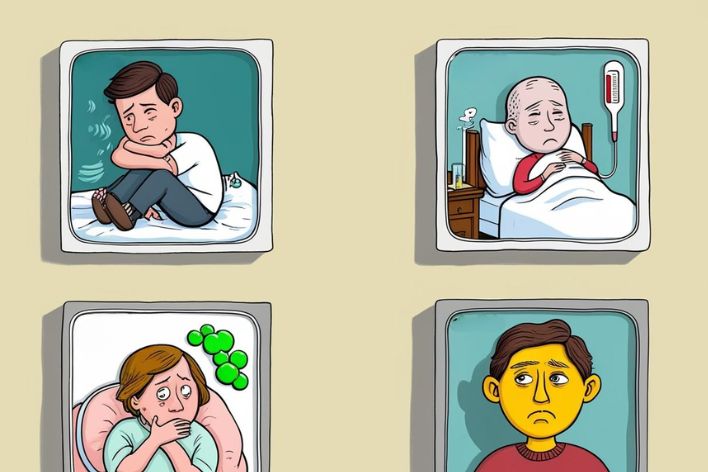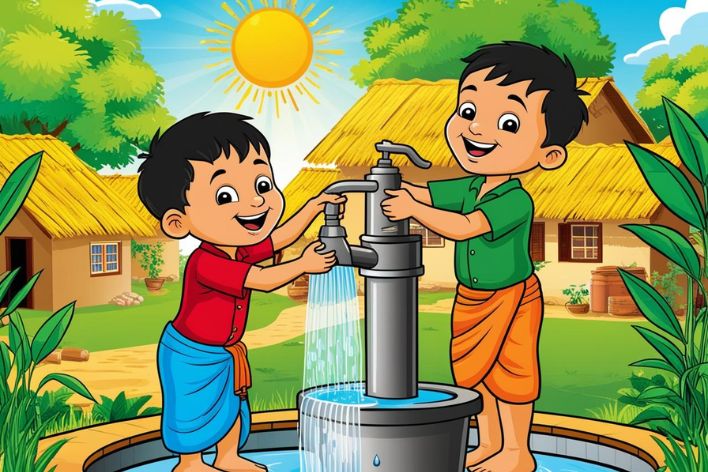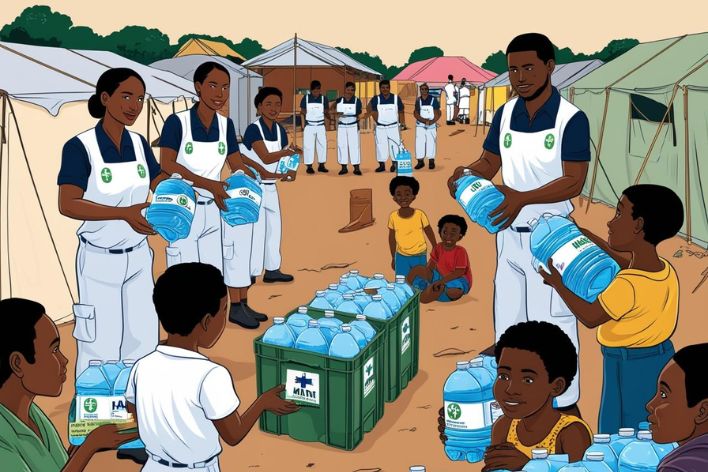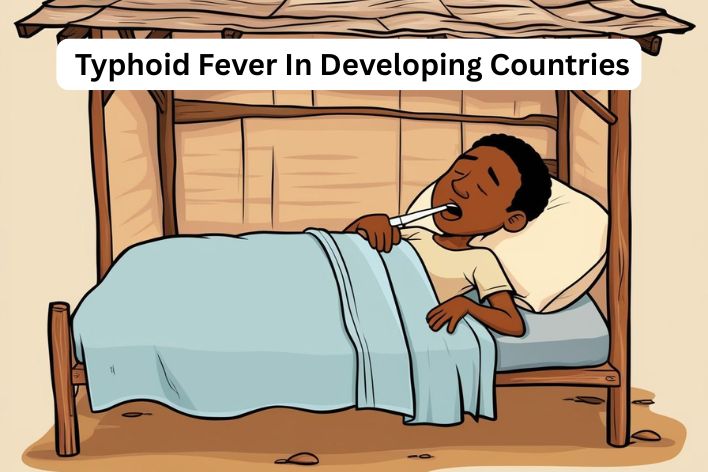Water-Related Diseases
Learning Outcomes
By the end of this lesson, students will be able to:
-
Define water-related diseases & understand their causes.
-
Identify different types of waterborne diseases.
-
Recognize the effects of these diseases on health & communities.
-
Discuss ways to prevent water-related diseases.
Introduction to Water-Related Diseases
Water is one of the most essential resources for life on Earth. It is crucial for drinking, cooking, sanitation, & supporting ecosystems. However, when water becomes contaminated with harmful substances, it can lead to serious health problems known as water-related diseases. These diseases are caused by pathogens (bacteria, viruses, & parasites) that are transmitted through contaminated water sources. Understanding these diseases is vital for protecting our health & the health of our communities.
What Are Water-Related Diseases?

Water-related diseases can be classified into two main categories:
Waterborne Diseases :These diseases can be caused by pathogens that are enter through the consumption of contaminated drinking water. Common examples are cholera, typhoid fever & hepatitis A.
Water-Washed Diseases: Insufficient water for personal cleanliness & sanitation. Common with sparse sanitation standards, examples include trachoma and scabies.
Importance of Clean Water

Clean water access is preventing waterborne diseases. Access to safe drinking water is the most easily manageable risk factor for these diseases. Unfortunately, many communities around the globe still do not have access to clean water sources.
Common Water-Related Diseases
Here are some of the more common water-borne diseases:
1. Cholera
Description: holera is an infectious disease caused by the bacterium vibrio cholerae. It is transmitted through contaminated drinking water or eating.
Symptoms: Symptoms can include profuse diarrhea, vomiting and muscle cramps. Without treatment, cholera can lead to severe dehydration & death in a matter of hours.
|
Cholera Facts |
Details |
|
Transmission |
Contaminated water or food |
|
Prevention |
Clean water (for drinking); decent sanitation |
|
Treatment |
The disease could be treated by rehydration therapy & using antibiotics. |
2. Typhoid Fever
Description: Typhoid fever is caused by the bacterium Salmonella typhi. It is spread through food & water that has been contaminated with faeces.
Symptoms: Sustained fever, fatigue, abdominal pain, headache & decreased appetite.
|
Typhoid Fever Facts |
Details |
|
Transmission |
Contaminated food or water |
|
Prevention |
Vaccination; drinking clean water |
|
Treatment |
Antibiotics; hydration |
3. Giardiasis
Description: Giardiasis is an intestinal infection caused by the parasite Giardia lamblia. It is transmitted through contaminated drinking water.
Symptoms: Symptoms include diarrhea, gas, stomach cramps, & nausea.
|
Giardiasis Facts |
Details |
|
Transmission |
Contaminated drinking water |
|
Prevention |
Filtering or boiling water |
|
Treatment |
Antiparasitic medications |
4. E. Coli Infections
Description: Certain strains of Escherichia coli (E. coli) bacteria can cause severe foodborne illness & are often linked to contaminated water.
Symptoms: Symptoms include severe stomach cramps, diarrhea (often bloody), & vomiting.
|
E. Coli Facts |
Details |
|
Transmission |
Contaminated food or water |
|
Prevention |
Proper cooking; safe food handling |
|
Treatment |
Hydration; antibiotics in severe cases |
5. Hepatitis A
Description: Hepatitis A is a viral infection that affects the liver & is transmitted through ingestion of contaminated food or water.
Symptoms: Symptoms include fatigue, nausea, abdominal pain, loss of appetite, & jaundice (yellowing of the skin).
|
Hepatitis A Facts |
Details |
|
Transmission |
Contaminated food or water |
|
Prevention |
Vaccination; good hygiene practices |
|
Treatment |
Supportive care; no specific antiviral treatment |
6. Amoebiasis
Description: Amoebiasis is an intestinal infection caused by the parasite Entamoeba histolytica. It is transmitted through contaminated food or water.
Symptoms: Symptoms include abdominal pain, diarrhea (which may be bloody), & fever.
|
Amoebiasis Facts |
Details |
|
Transmission |
Contaminated food or water |
|
Prevention |
Good sanitation; proper cooking |
|
Treatment |
Antiparasitic medications |
Real-Life Examples of Water-Related Diseases
Understanding real-life examples helps illustrate the impact of these diseases:
Cholera Outbreaks in Haiti

After the earthquake in Haiti in 2010, a cholera outbreak occurred due to contaminated drinking water sources. Thousands of people were affected, highlighting the importance of clean water access in disaster situations.
Typhoid Fever in Developing Countries

Typhoid fever remains a significant health issue in many developing nations where access to clean drinking water is limited. Efforts to improve sanitation have been crucial in reducing cases.
Giardiasis from Recreational Water

Infections of giardiasis have been described after swimming in lakes or river contaminated with feces from animals or humans. This highlights the importance of safe swimming practices.
Fun Facts About Water-Related Diseases
Waterborne diseases have a lot of fun facts associated with them:
|
Fun Facts About Water-Related Diseases |
|
Over 2 million people die of diarrheal diseases every year worldwide! |
|
These conditions are especially dangerous for children younger than the age of five! |
|
Natural disasters can lead to sudden outbreaks of cholera! |
|
The best way to avoid these conditions is by having access to clean drinking water! |
Formula Chart for Understanding Disease Prevention
Understanding what we can do to avert these diseases is essential to ensuring health:
|
Prevention Method |
Description/Action Required |
|
Boiling Water |
Boil drinking water one minute minimum |
|
Handwashing |
Before eating, wash hands with soap & after using the bathroom |
|
Proper Food Handling |
Cook your food, wash your fruits/vegetables |
|
Vaccination |
Keep your vaccinations up-to-date for diseases that are preventable such as Hepatitis A |
Preventing Water-Related Diseases
To prevent all water-related diseases, individuals, communities, governments, & organizations must all take action:
-
Water Safety: Making sure everyone has access to safe drinking water is critical for preventing these illnesses.
-
Better Hygiene Practices: Construction of adequate sewage systems minimizes contamination of drinking water sources.
-
Educating People on Hygiene : Bringing awareness of hygiene practices to communities can reduce infections drastically.
-
Regular Testing: Testing local waters for contaminants helps identify risks before they lead to outbreaks.
-
Emergency Preparedness: Communities must be prepared to provide safe drinking water during natural disasters or other emergencies.
Community Actions
There are a few things that communities can do to help prevent water-based diseases:
-
Creating communal wells that enable access to potable water.
-
Conducting periodic clean-up drives to clear the trash from community water bodies.
-
Educating residents about proper waste disposal methods.
-
Collaborating with local health authorities to monitor disease outbreaks.
Conclusion
According to WHO, water-related diseases are a leading cause of death worldwide but are preventable with education, better sanitation, & access to clean drinking water. Knowing how these diseases spread puts us in the driver’s seat to help prevent them in our communities.
By practicing good hygiene habits and supporting access to clean water for all, we can aid in reducing the rate of these diseases & keeping ourselves healthy! Keep in mind that you can do little things to think of safe drinking water for each & every one!
CBSE Schools In Popular Cities
- CBSE Schools in Bangalore
- CBSE Schools in Mumbai
- CBSE Schools in Pune
- CBSE Schools in Hyderabad
- CBSE Schools in Chennai
- CBSE Schools in Gurgaon
- CBSE Schools in Kolkata
- CBSE Schools in Indore
- CBSE Schools in Sonipat
- CBSE Schools in Delhi
- CBSE Schools in Rohtak
- CBSE Schools in Bhopal
- CBSE Schools in Aurangabad
- CBSE Schools in Jabalpur
- CBSE Schools in Jaipur
- CBSE Schools in Jodhpur
- CBSE Schools in Nagpur
- CBSE Schools in Ahmednagar
- CBSE School In Tumkur











